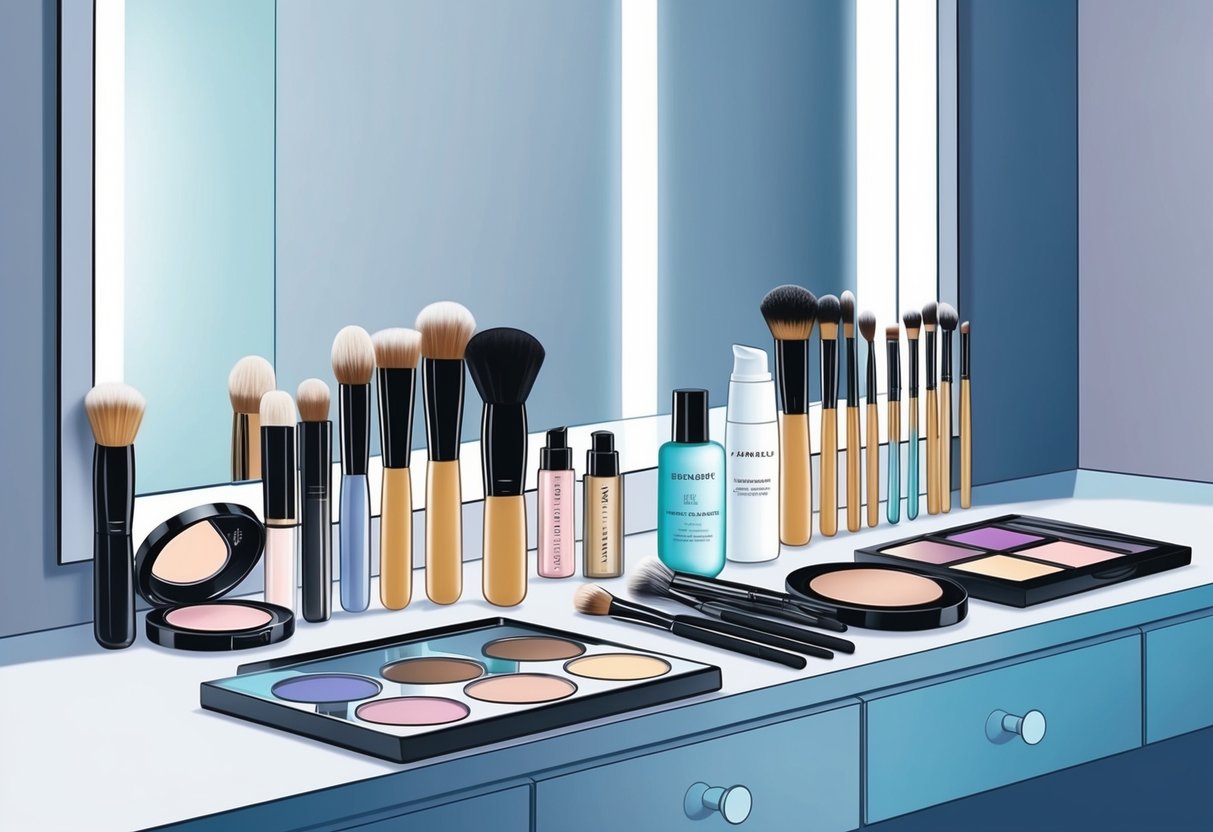Beginner’s Guide to Flawless Makeup Application: Step-by-Step Techniques and Tips
For anyone starting their makeup journey, achieving flawless makeup can seem overwhelming with the vast number of products and techniques available. A clear step-by-step makeup guide is essential for beginners to understand the basics and build confidence in their skills.
Focusing on straightforward tips and proven application methods helps demystify the process and ensures consistent, beautiful results.
Learning the right techniques for each step, such as how to properly prep the skin, apply foundation, blend eyeshadow, and define brows, is critical for a polished and long-lasting look. Flawless makeup for beginners isn’t just about covering imperfections—it’s about enhancing natural features and finding a routine that feels comfortable.
Understanding Your Skin Basics

Every successful makeup routine starts with knowing the skin’s individual characteristics. Finding the right products and techniques depends on understanding skin type, tone, undertone, and any common concerns that may impact makeup application.
Identifying Skin Types
There are five main skin types: normal, oily, dry, combination, and sensitive. Each type requires specific care and product choices for optimal makeup results.
Oily skin typically has excess sebum and can appear shiny, especially in the T-zone. Dry skin often feels tight, may flake, and benefits from hydrating, non-comedogenic formulas.
Combination skin features both oily and dry areas, needing balanced products in different zones. Sensitive skin reacts easily, showing redness or irritation.
Knowing one’s skin type helps select the right primers, foundations, and powders, improving both appearance and comfort. It is helpful to study the skin after cleansing: does it feel tight, look oily, or seem unchanged?
This simple check is often an accurate starting point.
Determining Your Skin Tone and Undertone
Skin tone refers to the surface color of skin, ranging from fair and light to medium, tan, and deep. Undertone describes the subtle hue beneath the skin’s surface—cool, warm, or neutral.
Undertone stays the same even if skin tone changes due to tanning or fading. A few simple methods help determine undertone:
- Blue or purple veins on the wrist usually indicate a cool undertone.
- Greenish veins often suggest a warm undertone.
- If the undertone seems to shift or is difficult to pin down, it may be neutral.
Choosing foundation, concealer, and blush shades that match both skin tone and undertone ensures a natural finish and enhances features. For example, those with warm undertones often look best in golden or peach-based shades, while cool undertones suit pink or blue-based hues.
Understanding tone and undertone makes shopping for makeup less confusing and prevents mismatched finishes.
Recognizing Common Skin Concerns
Common skin concerns include acne, hyperpigmentation, dryness, redness, and sensitivity. These issues impact makeup application and can be addressed by selecting appropriate skincare and base makeup.
For example, people with acne-prone skin should use non-comedogenic products, which don’t clog pores or contribute to breakouts. Dryness may cause makeup to settle in patches, so rich moisturizers and hydrating primers are a helpful first step.
Hyperpigmentation or uneven tone can be evened out with color-correcting products and full-coverage concealer. Redness may be toned down by green-tinted primers or soothing skincare.
Recognizing and addressing specific skin concerns leads to smoother, longer-lasting makeup and supports overall skin health. Using a routine tailored to these issues makes it much easier to achieve a flawless look.
Small adjustments like blotting oily areas, extra hydration for dry patches, or using oil-free formulas can make a significant difference.
Essential Skincare Preparation
Creating a flawless makeup look starts with a strong skincare routine. Prepping the skin by cleansing, moisturizing, and protecting with SPF ensures makeup applies evenly, lasts longer, and maintains a natural finish throughout the day.
Cleansing for a Fresh Canvas
Cleansing is the cornerstone of effective makeup application. Dirt, excess oil, and residual skincare products can prevent foundation from adhering smoothly to the face.
Using a gentle cleanser suitable for one’s skin type removes impurities without stripping natural moisture. A double cleanse—starting with an oil-based cleanser followed by a water-based formula—can be especially effective for those who wear sunscreen or makeup daily.
Cleansing in the morning ensures overnight oils and sweat are removed, while evening cleansing helps wash away pollutants from the day. For best results, the skin should be gently patted dry instead of rubbed.
Clean skin helps prevent clogged pores and breakouts, setting the stage for seamless makeup blending and longer-lasting coverage.
Moisturizing for Smooth Application
Moisturizing the skin is essential for smooth, even makeup application. Hydrated skin allows foundation and concealer to glide on without settling into fine lines or emphasizing dry patches.
Individuals with oily, dry, or combination skin should choose a moisturizer tailored to their needs. Key ingredients like hyaluronic acid, glycerin, and ceramides can boost hydration levels without leaving a greasy feel.
Applying moisturizer to damp skin helps lock in moisture and prepares the face for additional products. Allowing the moisturizer to fully absorb before applying primer or makeup minimizes pilling and improves the overall finish.
Consistent moisturizing as part of a skincare routine not only enhances the appearance of makeup but also strengthens the skin barrier over time.
Importance of SPF in Everyday Routine
Daily sun protection is non-negotiable for healthy skin and optimal makeup results. Broad-spectrum SPF shields the skin from harmful UVA and UVB rays, helping to prevent premature aging, dark spots, and skin damage.
For makeup wearers, a lightweight sunscreen that doesn’t leave a white cast is ideal. Layering SPF over moisturizer and under primer ensures protection without affecting makeup texture.
Many professionals recommend using mineral or chemical sunscreens that absorb quickly. Reapplying SPF throughout the day can be done with sunscreen powders or sprays formulated to go over makeup.
Maintaining consistent SPF use as part of a daily skincare routine is recommended by dermatologists. This step supports a more even complexion, prolongs youthfulness, and reduces the risk of sun-induced skin issues.
For more on skincare prep, see this step-by-step guide to flawless makeup.



